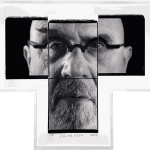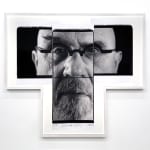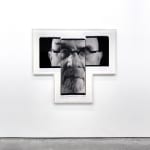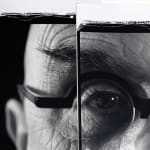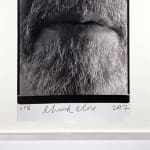Chuck Close 1940, Monroe, WA, USA-2021, Oceanside, NY, USA
Further images
In 1979, Chuck Close was invited by Kathy Halbreich, then director of the Hayden Gallery at the Massachusetts Institute of Technology, to use Polaroid's large-format 20-by-24-inch camera. This experience profoundly influenced his perspective on photography, leading him to consider himself a photographer for the first time: "It was the first time I considered myself a photographer... From that point on, I began to make photographs that deal with the kind of issues I deal with in my paintings."
Initially, he intended to use the Polaroids as studies for other works but soon recognized their inherent quality, allowing them to stand alone as finished pieces. Despite the camera's size and complexity, Close found it liberating. Some images were conceived individually, while others were combined into multi-image compositions.
An example of this is "S.P.III.," a work featuring four black-and-white Polaroid prints. In this piece, Close chose black-and-white Polapan film over Polacolor, resulting in a grand-scale composition with a black, gray, and white palette. This choice mirrors the monochromatic elements found in his other media works, which Close described as a self-reflection: "I think I’m having a conversation with myself in my self-portrait works."






